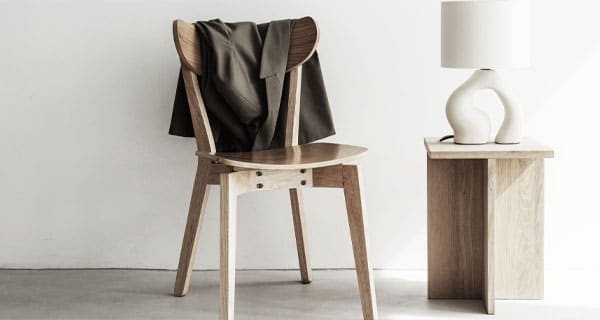
Used under a Creative Commons Licence
Interior Designers and Liability – don’t be left on the hook!
At Sharon Givoni Consulting®, we’re often asked about liability when it comes to “Supply Only” joinery and cabinetry. This is especially common among interior designers who want to keep their legal risks low, while still offering clients a full-service experience.
It’s a tricky area, and one that designers can easily misunderstand. Many assume that if they only supply goods—without building or installing them—they are free from responsibility. Unfortunately, that’s not how the law works.
Let’s break it down in plain English.
When Are You Considered the “Manufacturer”?
Even if you don’t build or install cabinetry yourself, the law may treat you as the manufacturer. This can happen if:
- The cabinetry is unbranded;
- The cabinetry was put together exclusively under your instructions; or
- You coordinated multiple suppliers but the client only dealt with you.
Why? Because under the Australian Consumer Law, what matters most is who the client sees as responsible. If the client paid you, got the quote from you, and trusted you to deliver, the law considers you the “face” of the transaction.
So, being a “middle person” doesn’t automatically let you opt out of risk.
The law contains mandatory protections—called consumer guarantees—that apply to all goods and services supplied to consumers.
Here are the key sections summarised:
- Section 54 – Goods must be of acceptable quality. They need to be safe, durable, and work as expected.
- Section 55 – Goods must be fit for purpose, including any specific purpose your client tells you about.
- Section 64 – You cannot contract out of consumer guarantees. Even if your contract says “Supply Only,” you still carry these obligations.
This means that while contracts and disclaimers are valuable for setting expectations, they don’t erase your baseline legal responsibility.
Why the Law Works This Way
The ACL is designed to make life simple for consumers. Clients shouldn’t have to chase multiple suppliers, installers, or manufacturers if something goes wrong. They simply return to the person they bought from—you.
Think of it like buying a kettle from Coles. If it breaks, you don’t track down the overseas factory. You take it back to Coles, and Coles sorts it out. The same principle applies in interior design: even though you didn’t make the cabinets, you sold them, so you’re on the hook if they fail.
Case Studies: Supply Only in Action
To show how questions around this may arise have a look at the case studies:
Case Study 1 – The Peeling Doors
Sarah, an interior designer, supplies custom kitchen cabinets to Mark. She orders boxes from Supplier A, doors from Supplier B, and sources handles separately. Mark never deals with the suppliers—only Sarah. When the doors start peeling after six months, Mark contacts Sarah.
This brings up the legal question: Who is responsible to Mark when the product fails—the suppliers, or Sarah as the person he contracted with?
Case Study 2 – The Bathroom Vanity
Luke coordinates a new vanity for Paula, made by a local cabinetmaker. Paula only deals with Luke for payments, measurements, and communication. When the vanity suffers water damage due to unsuitable materials, Paula turns back to Luke for a solution.
This raises the legal question: Does liability rest with Luke, who managed the project, or with the cabinetmaker who actually built the vanity?
Case Study 3 – The Broken Hinge
Jess supplies laundry cabinetry to Mia, but it is a supply-only arrangement and Mia organises her own installer. When a hinge breaks, Mia goes back to Jess. Jess attempts to direct her to the hinge distributor.
This leads to the legal question: Can Jess decline responsibility and pass Mia onto the distributor, or must Jess address the issue directly?
Lessons
Each of these scenarios highlights that liability under the law isn’t always straightforward.
The answers may differ depending on factors such as the nature of the agreement between the parties, whether the arrangement was supply-only or supply-and-install, what representations were made to the client, and how the relationship with upstream suppliers is structured.
Even the type of defect—whether it’s a manufacturing fault, unsuitable material choice, or wear and tear—can influence the legal outcome.
In the case of Sarah and the peeling doors, the question is whether her responsibility stops at sourcing from the supplier, or whether she remains fully accountable to Mark because she was the only person he dealt with. For Luke coordinating Paula’s bathroom vanity, the complexity lies in whether Luke is seen simply as a coordinator or whether his role effectively makes him the responsible supplier. Jess’s broken hinge example shows another twist: while she supplied the product only, the question is whether that limits her liability, or if she is still the primary point of resolution regardless of installation or supply-chain involvement.
What’s important is that these situations underline a key point: we cannot automatically assume that the interior designer or project coordinator is free from responsibility. Depending on how the transaction is structured, what the client was led to believe, and the expectations set, the liability may still rest with them. This is why these legal questions matter—and why knowing who is ultimately responsible is often more complex than it first appears.
Three Practical Tips for Designers
When it comes to these kinds of scenarios, one clear lesson emerges: you want your contracts drafted carefully to ensure that you are protected as far as possible, while also understanding the risks that you still retain. Even well-drafted contracts cannot remove every responsibility under the Australian Consumer Law, but they can make roles, responsibilities, and expectations much clearer, which can reduce misunderstandings and manage liability.
As the saying goes, “An ounce of prevention is worth a pound of cure.” For you, this means investing upfront in properly tailored agreements rather than trying to resolve disputes after problems arise.
Services for Interior Designers – how we can help you
We work closely with interior designers and related professionals to help them navigate both the creative and legal aspects of their work.
Our services include:
- Drafting and reviewing client agreements so the scope of responsibility is clear.
- Advising on contractor and subcontractor agreements, ensuring you aren’t unfairly left carrying all the risk.
- Resolving disputes with suppliers, contractors, or clients in a practical and commercial way.
- Helping you understand consumer guarantees under the ACL and how they apply to your business model.
- Protecting intellectual property, such as your designs, brand, and marketing material.
- Providing ongoing legal advice, so when issues arise you have guidance that is both practical and industry-specific.
Further Reading:
Designing Spaces: The Legal Perspective for Architects and Interior Designers
https://sharongivoni.com.au/supplying-furniture-what-interior-designers-need-to-know/
Designing Within the Law: Legal tips for interior designers
Legal Insights for Interior Designers: Stay Compliant and Creative
Please note the above article is general in nature and does not constitute legal advice.
Please email us info@iplegal.com.au if you need legal advice about your brand or another legal matter in this area generally.


